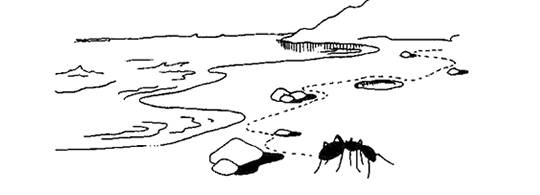Ants and Humans

If the late Nobel Laureate Herb Simon were still around, I’m sure he’d be fascinated by neuromarketing. He did a lot to explode myths of human behavior, notably that people always behave in a rational, utility-maximizing, manner. I never met Simon during my student years at Carnegie-Mellon (though I did serve on a committee with his frequent collaborator, Allen Newell). Nevertheless, Simon’s diverse interests – artificial intelligence, computer science, cognitive psychology, management theory, sociology, and economics – make him a sort of patron saint of neuromarketing and neuroeconomics, at least for me.
One of Simon’s interesting parables was “an ant on a beach.” Researchers spend untold amounts of time and money studying human behavior, and here at Neuromarketing most of the articles relate to that topic in one way or another. At times, that behavior seems impossibly complex. Forty years ago, Simon suggested that human behavior might not be as complex as it seemed. He suggested that an ant walking along a beach might describe a complex path – jogging to the right and left, occasionally backtracking, but always headed toward its primary destination. Simon noted,
An ant, viewed as a behaving system, is quite simple. The apparent complexity of its behavior over time is largely a reflection of the complexity of the environment in which it finds itself. I should like to explore this hypothesis with the word “man” substituted for “ant.” [From The Sciences of the Artificial by Herbert Simon.]
Suggesting that the complexity of human behavior might be due more to our complex environment than built-in complexity won’t, unfortunately, make it easier to predict what people will do. Still, I’d never discount any of Simon’s insights.
